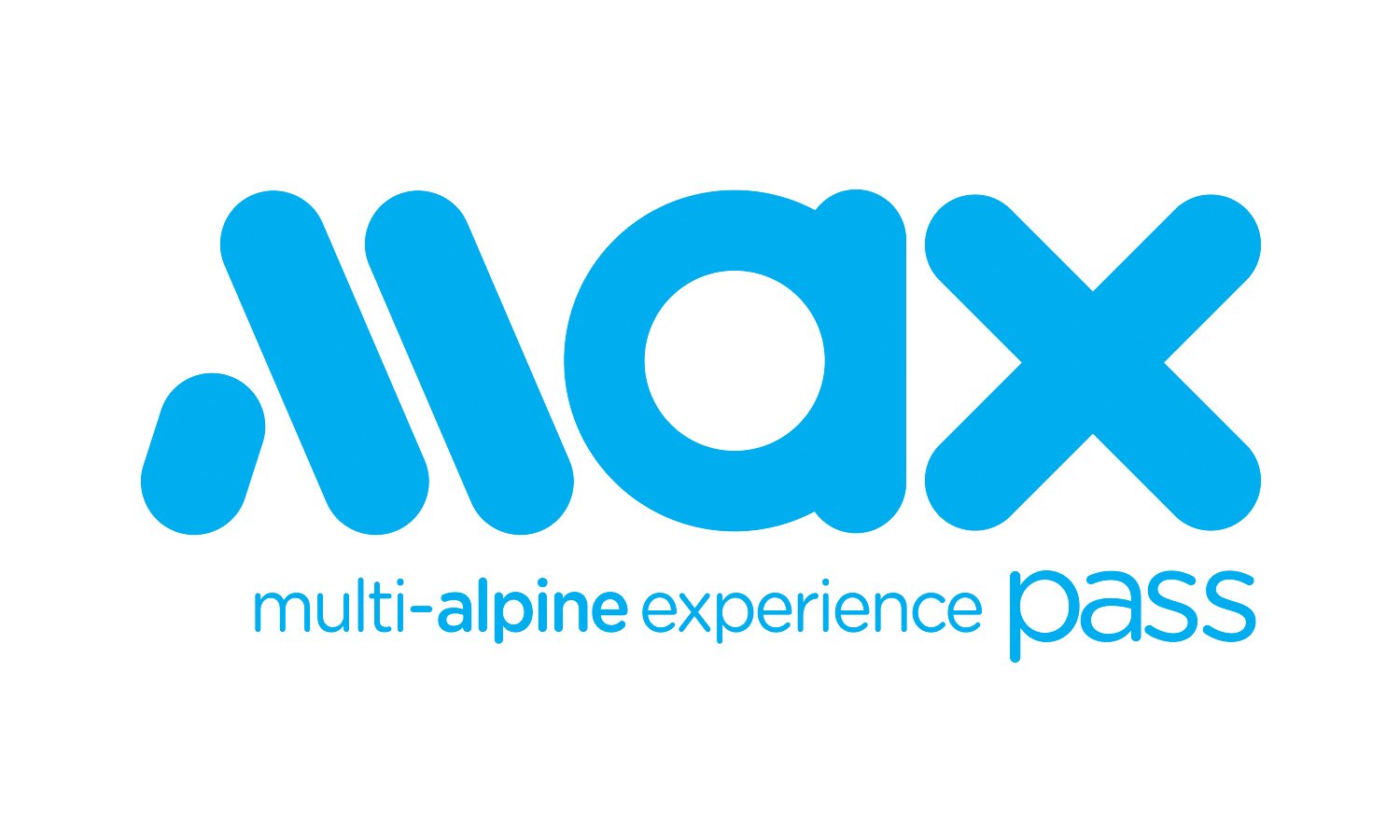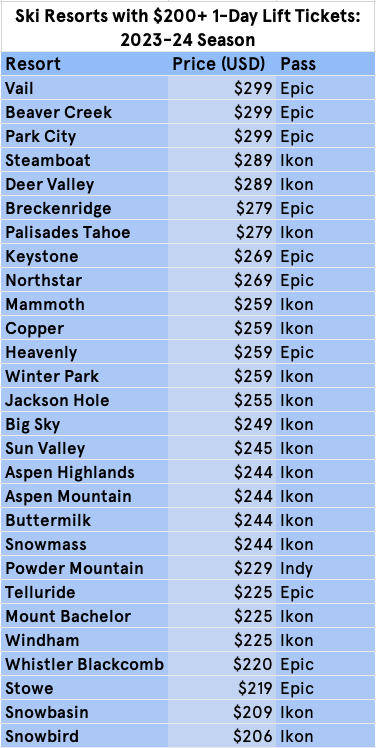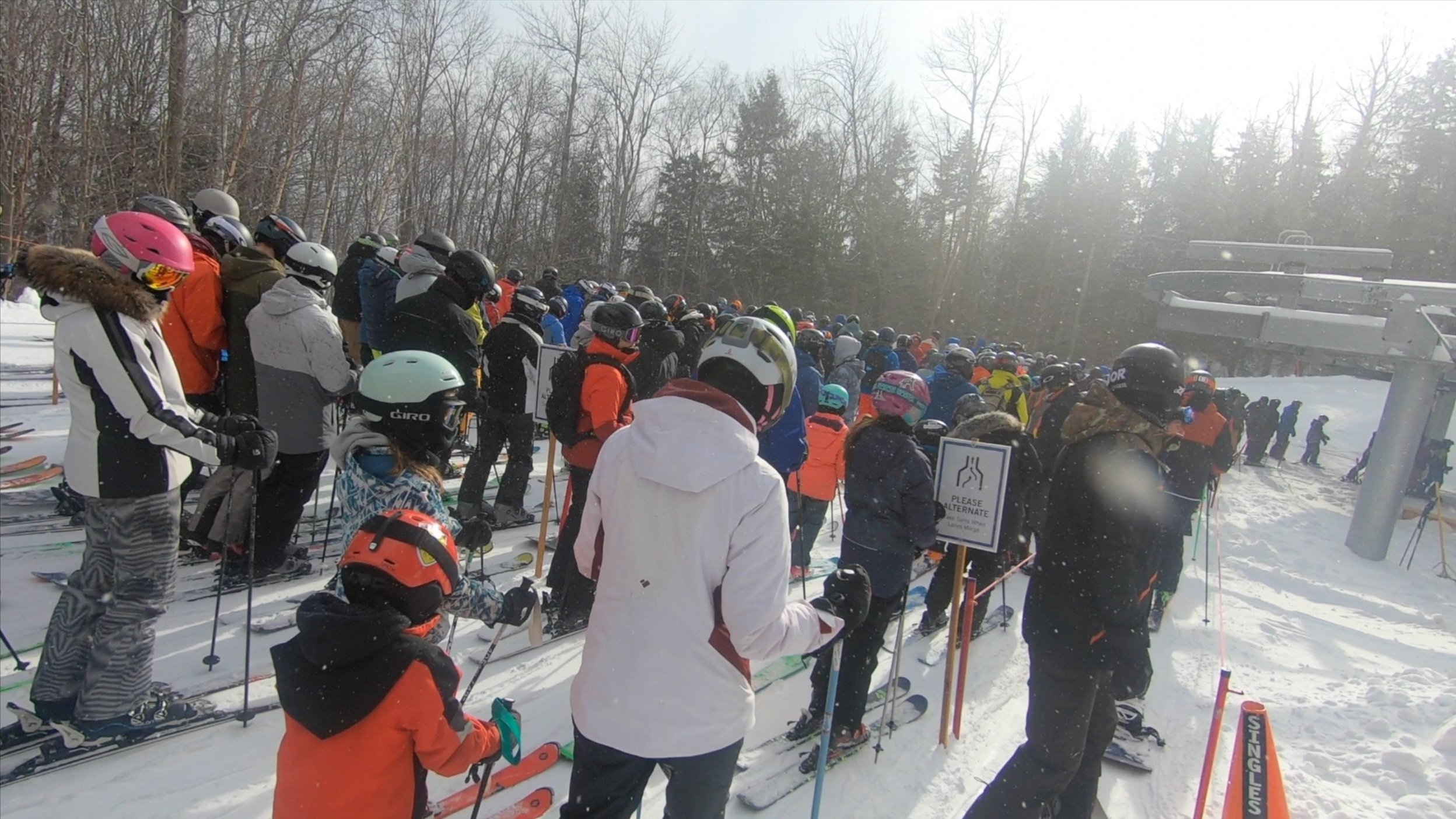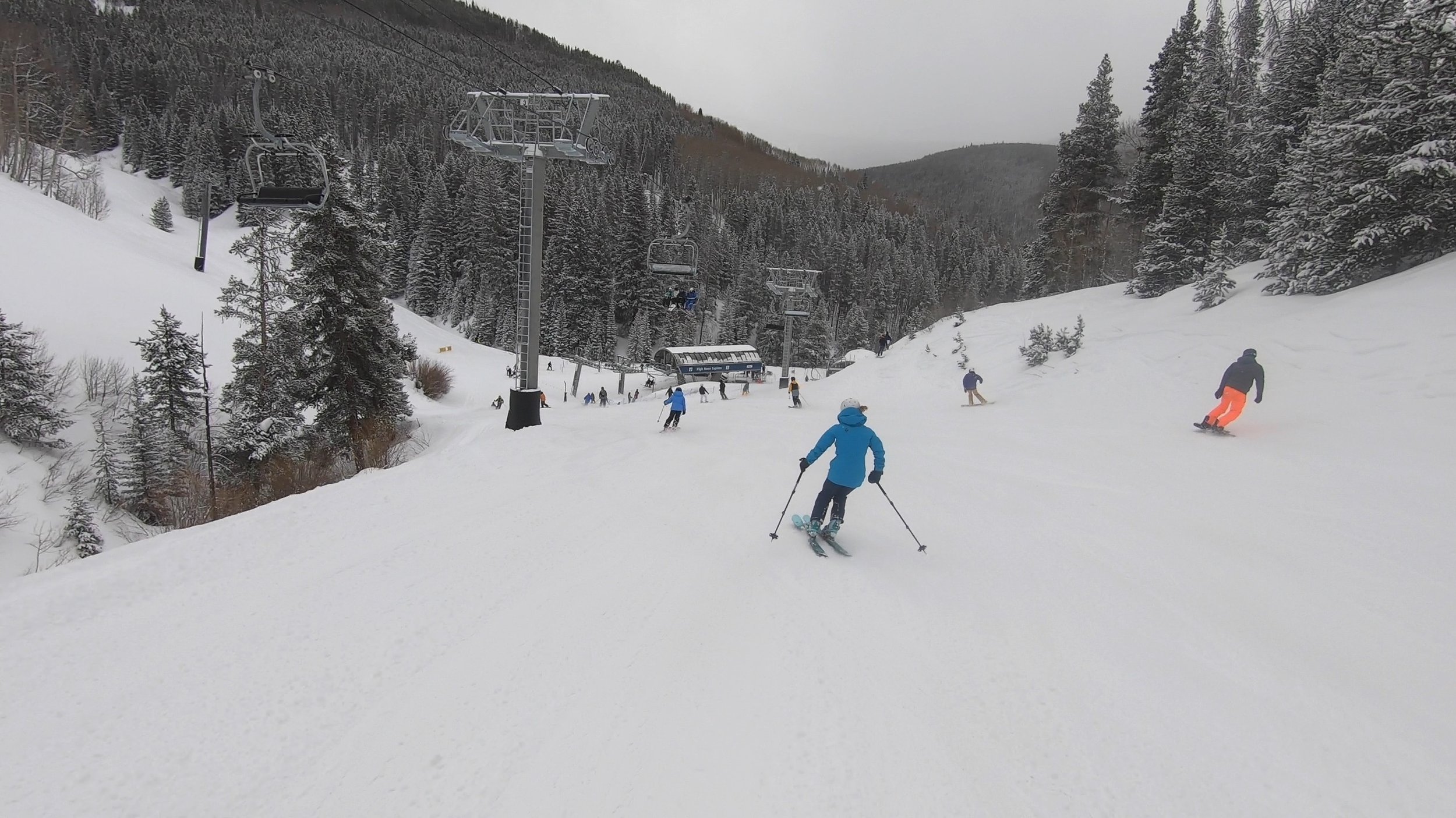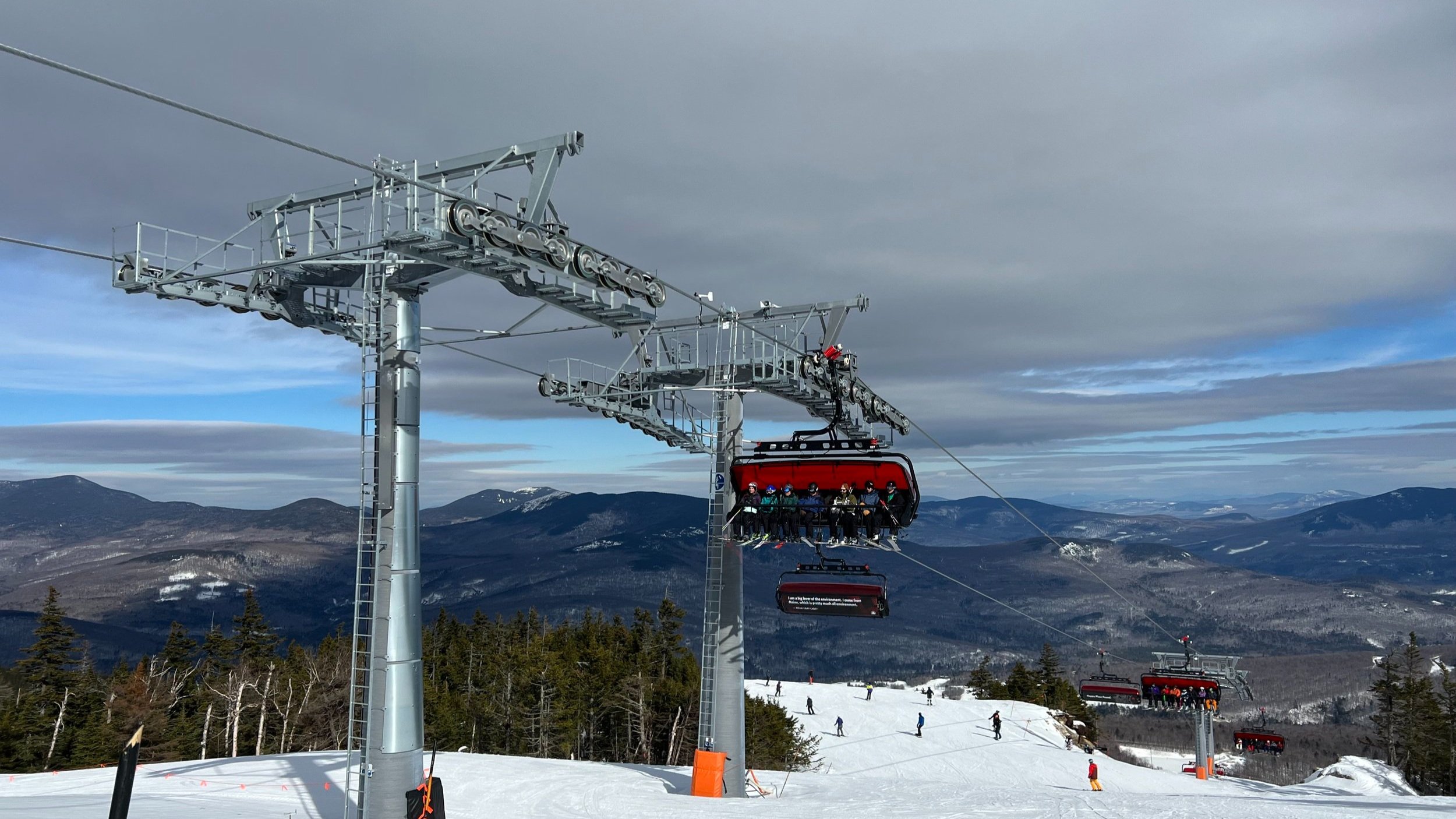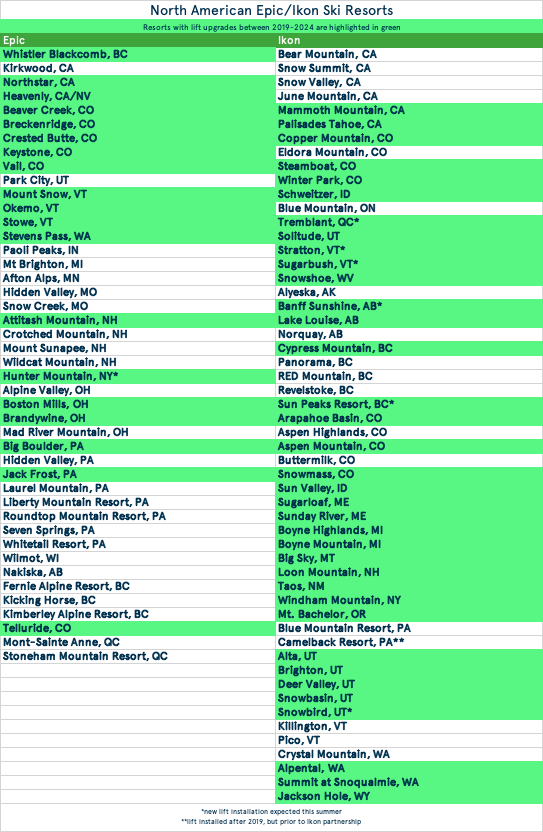Have the Epic and Ikon Passes “Ruined” Skiing? An Honest Look
Over the past five years, there are few words that have found their way into the winter sports world to the same degree as Epic and Ikon. These two multi-resort pass products—which, together, offer flexible access to nearly every major destination ski resort across North America and then some—have revolutionized the way that winter sports enthusiasts can access the mountains, providing up to season-long access for what seem like incredible prices.
However, these two pass products have made serious headlines over the past few years for what many have characterized as “ruining” the ski industry, with even some major publications that don’t typically cover the ski world picking up on the trend. So have the Epic and Ikon Pass products really ruined skiing, and if they have, what can you do about it? Let’s take a look.
Publications such as Slate have recently published high-profile articles claiming that Epic and Ikon have ruined winter sports.
Preface: What Are Epic and Ikon?
Before we jump in, it’s helpful to define exactly what the Epic and Ikon Pass products are. Rather than one singular pass, these entities are diversified suites of ski resort lift access products.
Epic and Ikon Passes come in several different varieties, but they only remain on sale through early December each year—meaning prospective buyers must commit before the ski season starts.
Both brands offer variants ranging from a few days of access to each mountain to full weeklong or even season-long access with no holiday restrictions. Importantly, for the most part albeit with a few exceptions, guests do not have to reserve their pass for specific days, meaning they can show up to most of the mountains on these passes whenever they want—this is in contrast to most typical lift tickets, which are only valid on one given date.
Finally, there is one big catch to both of these products: they are only available through the end of the fall, so you can’t buy them during the regular ski season. As a result, you’re essentially betting that you will be skiing enough during the winter to pay off your Epic or Ikon Pass when you buy it before the snow hits the ground.
How These Passes Came to Dominate the Ski World
While multi-resort passes like Epic and Ikon have been around for over a decade, a series of circumstances occurred around five or so years ago that really started to elevate these products in the public domain.
From 2016 to 2019, Vail Resorts, which owns and issues the Epic Pass, bought dozens of ski resorts across nearly every major North American ski region it had been absent from. This allowed the Epic Pass to feature resorts not just in Colorado and Tahoe, as had previously been the case, but across the Northeast, Pacific Northwest, and Midwest as well, resulting in a product that could practically be used not just for fly-to destination vacations, but for day and weekend trips as well.
By purchasing ski resorts across all major regions of North America, Vail Resorts turned the Epic Pass into a practical tool for both local trips and fly-to vacations.
Around the same time, the Ikon Pass emerged in its current form as a competitor to Epic. From 2015 to 2018, consumers could access many of the same mountains on a product called the MAX Pass (as well as some additional mountains that later did not join Ikon). However, this pre-Ikon product didn’t have any unlimited mountains, and perhaps more importantly, it wasn’t nearly as publicized as its successor. But when the Ikon Pass brand officially debuted in early 2018, this set up a dichotomy where not only did these pass products have to position themselves as better alternatives to traditional lift tickets—but they also had to directly compete against each other.
Since then, the Epic and Ikon Passes have grown to become a dominating force in the North American ski market, with profound consequences that have reverberated throughout the entire industry.
The Ikon Pass’s predecessor, the MAX Pass, offered access to many of the same mountains but without any unlimited resorts.
Change #1: Lift Ticket and Season Pass Costs
Much Cheaper Pre-Season Resort Access
This brings us to our first major change with the shift to Epic and Ikon Passes—much cheaper resort access if you buy in advance, and much more practical access to several days across multiple mountains.
The Epic and Ikon Pass products are fantastic deals if you use them as designed. Passholders can theoretically ski hundreds of days each winter at dozens of mountains for only about $500-$1,000 for the whole season. Even if one goes for one of Epic’s Day Pass offerings, which are essentially just flexible lift tickets, one can ski or ride at mountains like Vail, Breckenridge, or Stowe for only around $100 per day (the competing Ikon Session Pass offering isn’t as competitive price-wise).
All these access structures mean that winter sports enthusiasts can hit some of the best ski resorts in North America for rates that previously hadn’t been around for decades—or in the event one really squeezes the value out of your pass and visit multiple ski resorts—maybe in the history of winter sports.
For those who really squeeze the value out of their passes and visit multiple mountains each winter, Epic and Ikon provide unprecedentedly attractive access rates.
Sourced from resort websites. Whistler Blackcomb is $299 CAD, but converted to USD based on 2/14/2024 exchange rates.
Outrageously Priced Traditional Lift Tickets
But this strategy comes with a dark flip side. If you miss the early December Epic and Ikon deadlines, traditional lift tickets are now much more expensive.
If you wait until the actual winter season to buy your resort access, many of the mountains on these passes—and most of the destinations that typical vacationers think of going to—now charge astronomical prices that can rise above $200 for a single day of skiing. Yes, that’s not just one or two mountains doing this—over 25 mountains now charge these astounding one-day rates during peak times.
Prices are still lower if you buy your tickets a few weeks in advance or for an off-peak weekday, but they’re not that much lower. As a result, you end up in a situation where no matter how far in advance you buy a traditional lift ticket, an Epic or Ikon Pass product will pay off in less than a week—and in certain cases, just a couple of days. So in other words, while these passes are great in theory for regular skiers and riders going to a ton of mountains, their rise really isn’t ideal for casual vacationers who want to make a trip happen without substantial pre-season forethought.
Demise of Third-Party Lift Ticket Discounts
But wait, what about third-party lift ticket discounts that used to be so prevalent in the ski world? Regrettably, these have almost entirely disappeared.
Every Epic mountain except one and the vast majority of Ikon mountains are owned by large mega corporations, including Vail Resorts and Resorts of the Canadian Rockies for the former, and Alterra, Boyne, and Powdr for the latter. For the mountains they own, most of these corporations have decided to limit the third-party discounts that used to be so powerful in the ski world—and would have historically been a way to avoid the atrocious lift ticket prices that have cropped up in recent years. As a result, places where you could previously score great deals, such as REI, Costco, and certain local retail shops, are almost entirely irrelevant to destination ski resorts now (although there are a handful of exceptions).
Even many hotel properties are shut out from ticket deals unless they’re owned by the mountain companies themselves. Unfortunately, in these cases of the accommodations that are owned by the resorts, the nightly rates are usually so expensive that any ticket savings are negligible to the overall cost of the trip.
At many Epic and Ikon-affiliated ski resorts, especially those with unlimited access, weekend crowds have become a significant issue.
Change #2: Crowding Patterns
Uptick in Weekend Crowds
Okay, so buying lift tickets for specific dates doesn’t really make sense anymore—and a lot of people have caught onto this. As a result, most “in-the-know” folks have now moved to an Epic or Ikon product to access the vast majority of mountains affiliated with these issuers—and this also means that a sizable portion of the ski world is no longer wedded to a specific date to use their ski pass (and for the non “day pass” products, no longer wedded to a cap on the number of dates they can use).
Due to these circumstances, several Epic and Ikon mountains have seen substantial changes to on-mountain crowding patterns. Especially in the cases of the resorts with unlimited access on these products, it’s now really tough to enjoy skiing weekends, as everyone aims to get their days’ worth on their passes.
This statement doesn’t necessarily hold true for every single winter weekend—and certain very remote mountains without large nearby population centers are notable exceptions to the trend. However, if a certain day with particularly desirable weather rolls around—let’s say it’s snowed for the first time in awhile—expect everyone and their mom to show up, because on the surface, there’s really no net negative to them doing so.
To combat substantial increases in access road traffic, many ski resorts have introduced paid parking reservation policies during peak times.
Traffic Issues and Parking Restrictions
This massive increase in crowds has had substantial downstream effects on the resorts participating in these pass products. Yes, weekend lift lines have gotten worse—but in a lot of cases, hours-long access road traffic and near-impossible parking situations have prevented people from even getting to the slopes in the first place.
So how have Epic and Ikon-affiliated mountains addressed these problems? Well not by limiting pass sales. Instead, more and more resorts are adding restrictions to use their parking lots, either requiring visitors to pay to park in a remotely desirable location or making them reserve a spot on site several days in advance. In the cases of certain resorts such as Solitude and Crystal, for most guests, there is no free parking option at all (albeit with Solitude, you can get around paying if you carpool with four or more people).
These parking policies have definitely helped reduce access road traffic versus the absolutely horrendous waits in the earlier years of Epic and Ikon, but they also mean that you can’t always just drive up to your mountain and use your pass; rather, there are some extra strings—and maybe even extra costs—attached to using it. These parking spots fill up quickly at the most popular mountains, at times even weeks in advance, so if you need to drive to your mountain and you’re not on top of the inventory, you might find it really tough to use your pass.
Some have claimed that even with the new parking policies, the traffic jams are still a lot worse than they were in the years before the passes really took off; however, we’ve found this to vary by region, with Utah’s Cottonwood Canyons and Vermont’s mountains definitely seeing an increase in crowds, while on the other hand, Colorado’s I-70 Corridor and Tahoe’s access roads have had bad traffic problems for decades.
Thanks to holiday blackout policies, peak-time holiday crowds have actually seen some relief at the highest-end Epic and Ikon ski resorts.
Holiday Crowd Relief for Blacked-Out Ski Resorts
So weekend crowds have gotten worse in recent years, but what about holidays? Well, it turns out that’s a much more mixed bag.
For those who don’t buy a top-of-the-line Epic or Ikon product, several of the popular resorts on these passes come with holiday blackouts, meaning that large swaths of passholders can’t use them during the times that would theoretically have the highest demand. As a result, peak-time holiday crowds at blacked-out resorts such as Vail, Beaver Creek, and Snowbird have now actually gotten better than they used to be in the pre-Epic/Ikon days. Ironically, these holiday blackouts were probably originally intended to address the overcrowding that’s now seeped through to weekends.
On the other hand, if a certain mountain isn’t blacked out during holiday periods, one should expect the same problems as on weekends, but to an even greater extent.
Epic and Ikon-affiliated resorts have really benefitted from capital investments over the past five years.
Change #3: Large-Scale Capital Investments
A Note on the Revenue Incentive for Ski Resort Operators
Before we go any further, it’s important to touch on the “why” of the Epic and Ikon Pass strategy. Why have Vail Resorts, which issues the Epic Pass, and Alterra, which issues the Ikon Pass, moved to products that are so advantageous for early-bird buyers but traditional lift tickets that are downright horrendous values? (We could also get into why every major ski resort is now on one of these passes—including the ones not owned by large mega-corporations—but that’s probably for another article.)
It’s not just because Epic and Ikon are trying to one up one another—it turns out a key component here is weather risk. With winter seasons becoming less and less predictable, it’s hard to persuade consumers to splurge for a ski vacation—which is a luxury purchase—if it looks like conditions will go bust. But if the ski resort mega corporations can basically force consumers to lock in their mountain access before the weather conditions are even known, that monetary risk is out of the hands of the resorts, allowing for much more reliable revenue.
While Alterra’s financials are currently private—as are the financials of Powdr and Boyne Resorts, which feature most of their mountains on the Ikon Pass—a look at Vail Resorts’ financials shows just how effective the strategy of selling pre-season Epic Passes has been for that company over the past few years.
The shift to Epic Passes has been incredibly lucrative for Vail Resorts’ bottom line. (While the company did acquire three Pennsylvania ski areas in 2021, they only accounted for a small shift in revenue.)
Record-Breaking Lift Upgrades
One can debate the ethics of this strategy, but it’s clear that the more consistent revenue has allowed for substantial infrastructure investments at the resorts on these passes. The North American ski industry has seen record lift investments over the past five years, with 63% of ski resorts on Ikon seeing at least one lift upgrade, and 43% of ski resorts on Epic seeing at least one lift upgrade. If we narrow it down to resorts that people actually go out of their way to plan destination trips to, those percentages increase considerably.
It’s unclear whether these investments will continue at the same cadence for the foreseeable future, but at least for now, most of these upgrades have provided palpable experience changes for visitors to their respective resorts.
Every resort highlighted in green has seen at least one lift upgrade since joining Epic or Ikon.
Change #4: Trickle-Down Effects to Local and Retail Businesses – Both Positive and Negative
Higher Pre-Season Gear and Rental Demand
Another benefit to the consistency of folks locking in their passes before the season starts has actually been the trickle-down demand to local and retail businesses. Since more and more folks are committing to winter sports well before any weather impacts can dissuade them from going, they are also committing to the required gear and rentals for the activities, including skis, boards, helmets, goggles, and jackets. For many rental shops and winter sports retailers, this has allowed for not just more reliable sales, but customer activity much earlier in the year—with some folks locking in their equipment as early as the preceding summer.
Thanks to the uptick in pre-season demand, winter sports rental and retail shops have seen earlier and more reliable revenue—but have struggled to compete with establishments affiliated with Epic and Ikon.
Traffic Steered Away from Non-Epic/Ikon-Affiliated Shops
However, it hasn’t been all sunshine and rainbows for these independent shops. The Epic and Ikon Pass products may bring more people to town, but they also come with incentive structures that steer people away from businesses they aren’t affiliated with. This is especially true in the case of Epic, which offers 20% discounts on all rental shops owned by Vail Resorts, meaning that pass holders often choose to skip independent establishments—even if the overall cost might be lower.
One shop owner we talked to as part of this story mentioned that over the holiday break, the lines were out the door to get rentals from the Vail-owned businesses, while their shop sat empty.
The rise of Epic and Ikon is hard to separate from a shift to a corporate-feeling ski world, especially when it comes to food quality, accommodations, and housing.
Change #5: Corporatization of the Destination Ski Resort World
In fact, given the fact that the move to Epic and Ikon has been enabled in large part thanks to Vail and Alterra buying so many independent mountains over the past decade, the rise of these multi-resort passes is hard to separate from a shift to much more corporate-feeling mountains in general.
With the consolidation going on, long-time employees have often been replaced with seasonal workers, on-mountain restaurant food has been reduced to cafeteria-style quality while going for laughable prices, and the push to build more luxury hotels and real estate has reduced the quantity of housing available for full time residents (although on this last point, the post-COVID move to remote work has impacted this circumstance as well).
Ultimately, the local atmosphere that has made so many ski resorts feel special over the years is not what it once was, and that’s really disappointing for a sport that revolves so much around getting away from it all in the great outdoors.
Independent ski resorts have seen a significant renaissance in the multi-resort pass era, with options such as the Indy Pass, Power Pass, and multiple season pass partnerships democratizing access.
Change #6: Multi-Resort Pass Options for Independent Ski Area Access
But not all hope is lost for those who prioritize a down-to-earth environment. In fact, there is some serious good that has happened to the locally-owned ski resort world over the past few years.
While Epic and Ikon primarily feature destination ski resorts owned by large corporations, the move to these multi-resort pass products has not been lost on smaller, independent ski areas. These types of products haven’t just become so extensively adopted because the companies are forcing them on people—there is genuine demand for such wide-reaching lift access products. As a result, many of the mom and pop mountains have realized they need to be on their own multi-resort pass product in order to stay relevant in the new pass-dominated world.
Within the past few years, products such as the Indy Pass have emerged to partner with several of these smaller mountains. A couple of other mountains, such as Ski Cooper and Mount Bohemia, have spearheaded another strategy, adding as many partner resorts as possible on their season passes, effectively making them multi-resort pass products in and of themselves. Another five dozen ski resorts have signed onto a pact called the Powder Alliance, allowing those who purchase a season pass to any mountain on the agreement to access three reciprocal days at each of the rest.
The Indy Pass is the biggest locally-oriented multi-resort pass product, featuring over 100 downhill ski areas.
The Indy Pass is perhaps the most prominent of all of these offerings, having now signed with over 100 ski areas across North America alone; while it isn’t a season pass at any of its partner mountains, it offers two days of access to every mountain on the pass (with or without blackouts, depending on the tier). This not only means that Indy Pass holders can theoretically ski or ride at more resorts than a typical person would ever hit in their lifetime, but thanks to the two-day restriction that prevents folks from using it as a true season pass, the product hasn’t resulted in a notable uptick in crowds at its affiliates. And while rates have increased in recent years, the base Indy still only goes for $399, meaning that if you use it as designed, it’s a steal for the quantity of mountain time you get.
The Indy Pass isn’t perfect—the base pass’s blackout dates are severely restrictive at many mountains, quantities have become much more limited in recent years, and most of its mountains do not offer nearly the same size, infrastructure, and destination experience as Epic and Ikon mountains—but one could argue that the move to multi-resort pass products has had a significant net positive effect on those frequenting these locally-oriented ski areas, where skiers and riders can now hit dozens of these smaller mountains each winter without facing the uptick in crowds that’s plagued many Epic and Ikon-affiliated resorts. And importantly, the vast majority of these local ski resorts have not seen the same egregious increase in lift ticket rates as their destination brethren, meaning that the visitors to these resorts who have chosen not to opt for the pass products have not had to deal with the downsides for not committing early enough.
Epic and Ikon Passes have democratized access to winter sports in a notable way—but at the cost of increased corporatization and severe penalties for those who don’t book well in advance.
Final Thoughts
Epic and Ikon have had a lot of negative side effects, but they’ve mainly been consequences of one notable benefit: democratizing access to the sport for the most adventurous and forward-thinking travelers. Yes, crowds have gotten a lot worse at the major destination resorts, but think about it—if you have an Epic or Ikon Pass, it’s been in your best interest to increase the number of trips you’ve taken to get your money’s worth, and great minds think alike.
Unfortunately, the rise of these two passes has also been enabled by the continued consolidation of the destination ski resorts across the country, so no matter how forward-thinking a skier or rider might be, there’s no avoiding the more commercialized feel at some of the best ski resorts in North America nowadays. But luckily, if you don’t need the biggest and best ski resort to have fun on your next ski trip, solutions such as the Indy Pass have democratized access to the more locally-oriented mountains without imposing the same crowd and lift ticket price consequences.
Ultimately, the era of planning destination ski vacations a few weeks in advance is dead here in North America—and if you want to practically spend time in the mountains now, you either need to commit well before the season starts or stick with a smaller, independent ski area.





